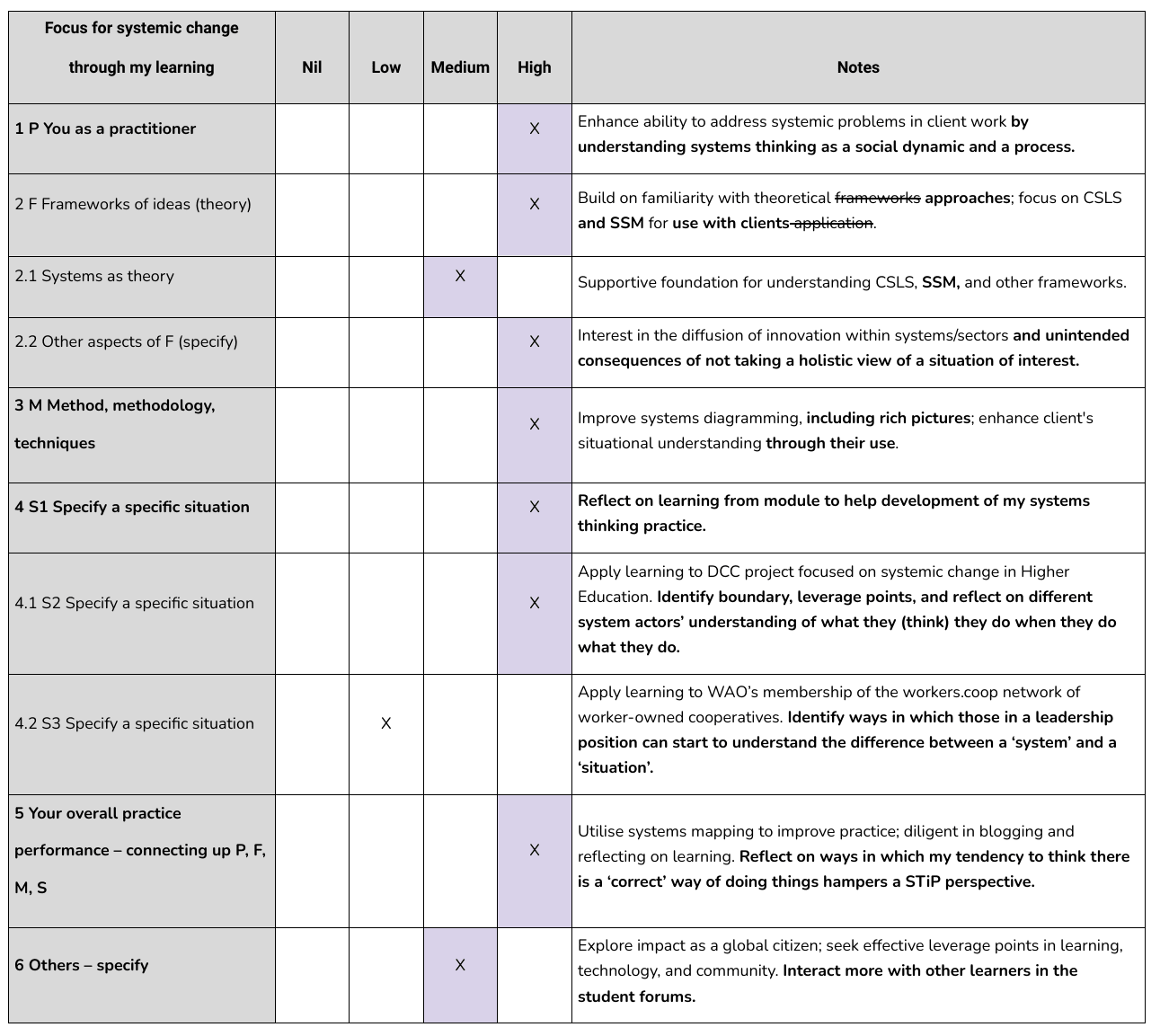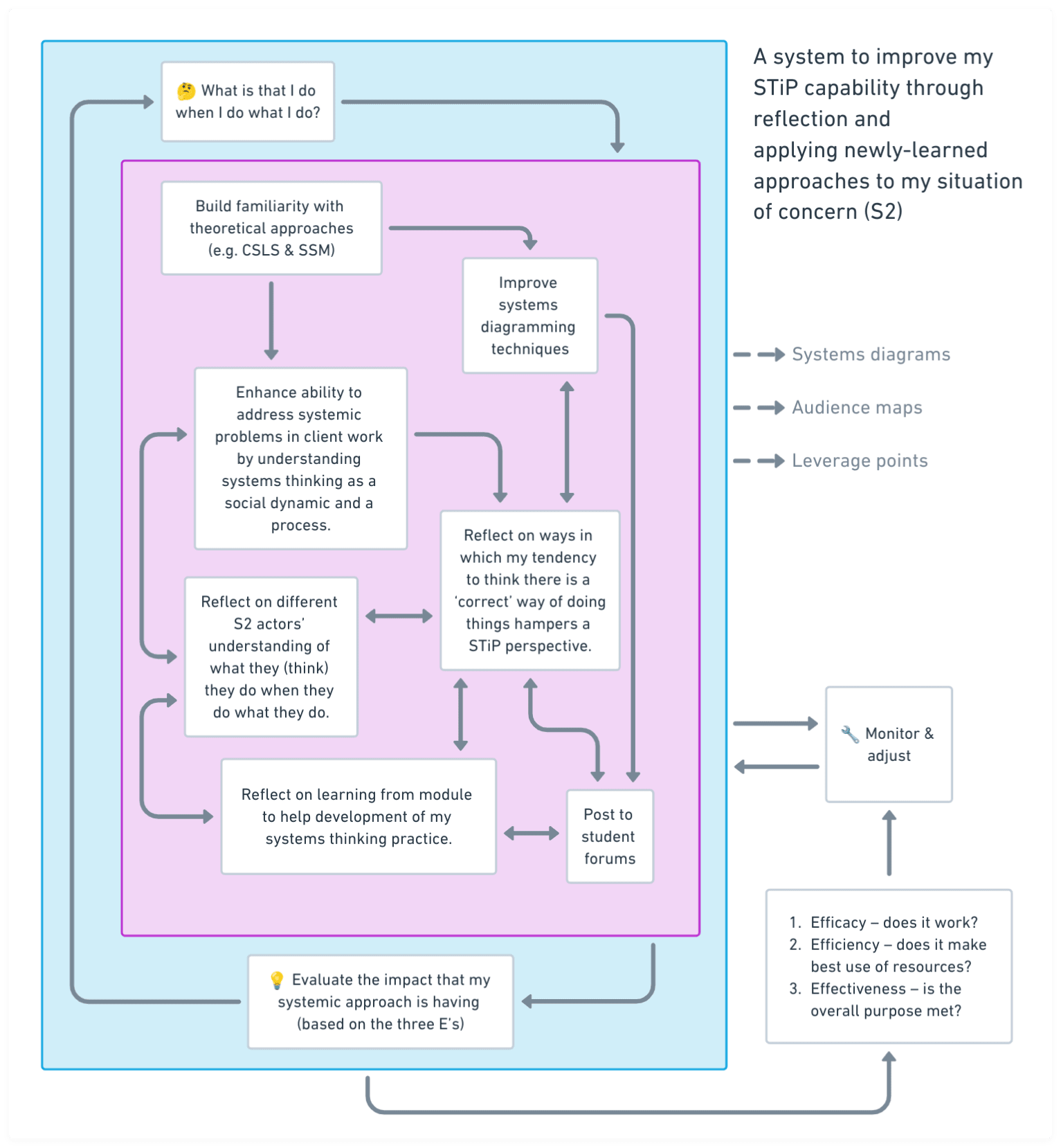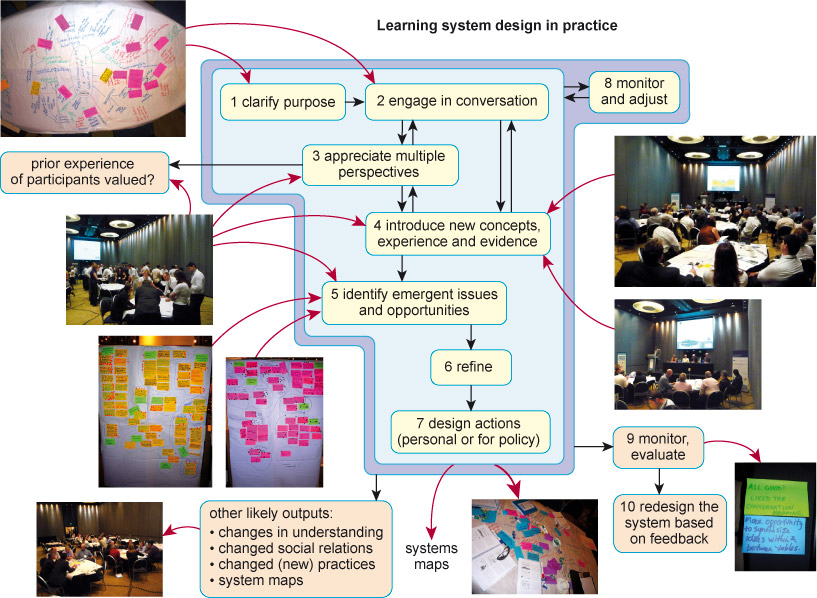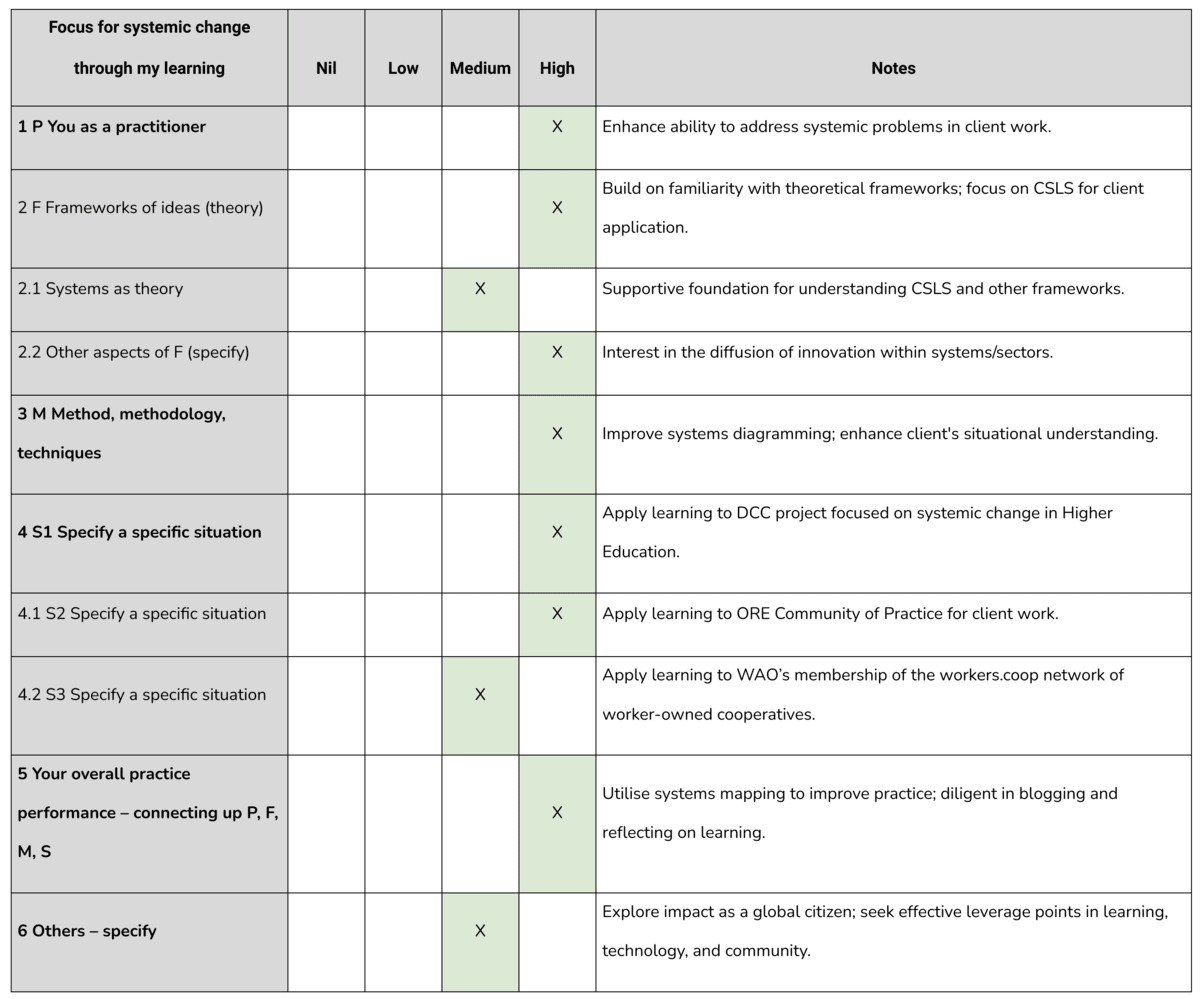TB872: My learning contract as a designed system of interest
Note: this is a post reflecting on one of the modules of my MSc in Systems Thinking in Practice. You can see all of the related posts in this category.

It’s time to revisit my learning contract, that document that I’m encouraged to keep updated during this module, and turn it into a ‘designed system of interest’. In other words, I need to take something which is currently a table with words in it and transform it using the I’ll be building on the diagram I created in this post and also this one.
It seems as if about half of the students on this module have previously studied TB871. Although it’s not a pre-requisite, it seems like there’s a lot of knowledge and understanding that, if not assumed, would be extremely helpful in knowing what’s actually going on at various points of this module.
If it weren’t for fellow student Paul Phillips sharing his diagram for this activity in the student forums, I’m not sure I would have known what to do. Thank you Paul 🙏
As a reminder, my learning contract when I last touched it looked like this:

The idea is to turn it into something that looks like this:
The idea in doing this is to move from systematic to systemic practice in a way which represents the stage I’m at in the module. I’m not going to lie, this is hard. I’m new to the concepts involved, the diagrammatic approach, and juggling both my S1 and S2 at the same time is confusing.
Nevertheless, I persist.
The diagram below is my attempt at taking the information from the learning contract and turning it into a model:

I have to say that I’m finding this part of the course particularly difficult. There are sections explained in painstaking detail, followed by parts akin to the meme about how to draw an owl.
References
- The Open University. (2021). ‘2.5.1 Taking a design turn in your practice’, TB872: Managing change with systems thinking in practice. Available at https://learn2.open.ac.uk/mod/oucontent/view.php?id=2171589§ion=2.5.2.5.1.1 (Accessed 26 January 2024).



